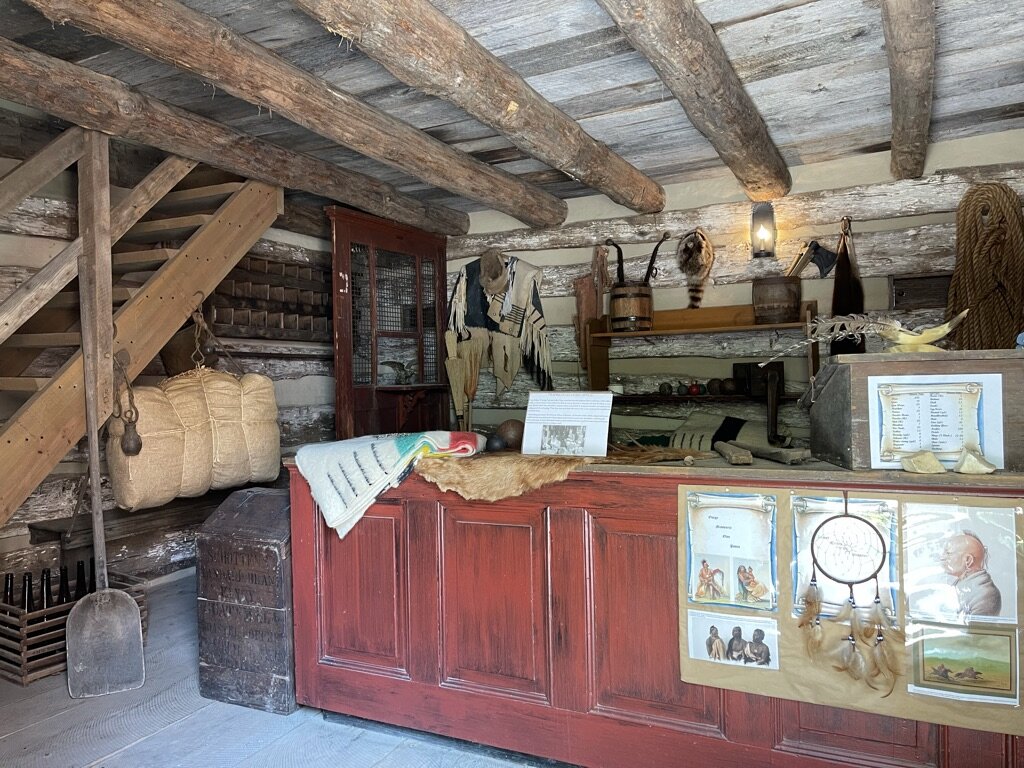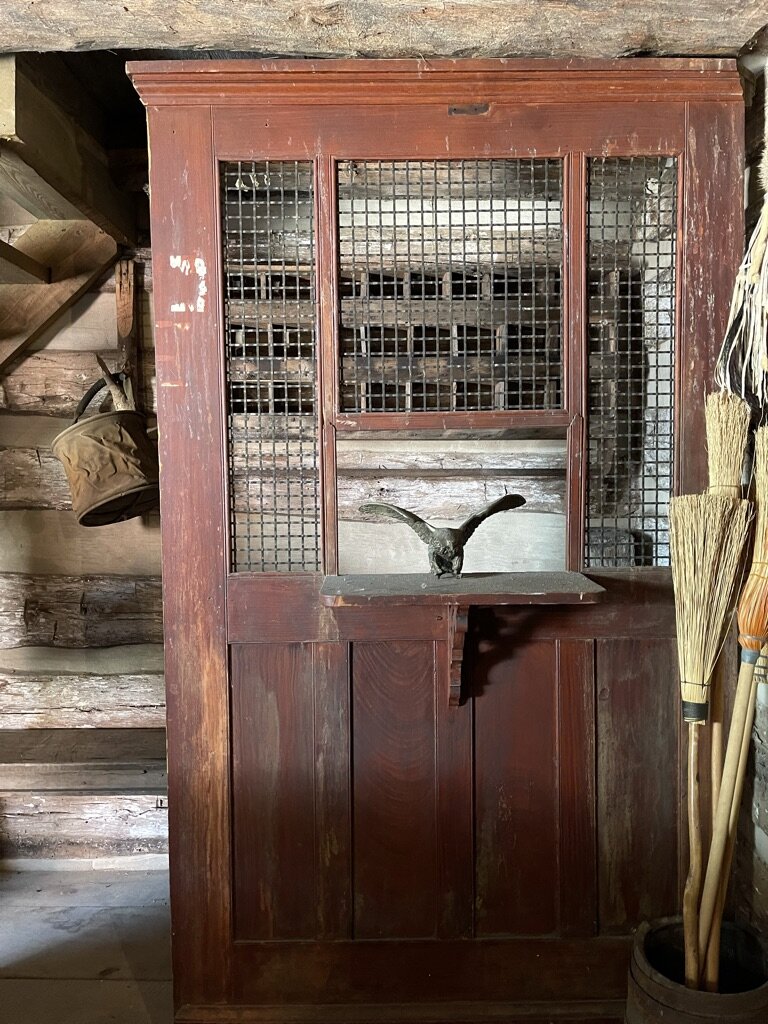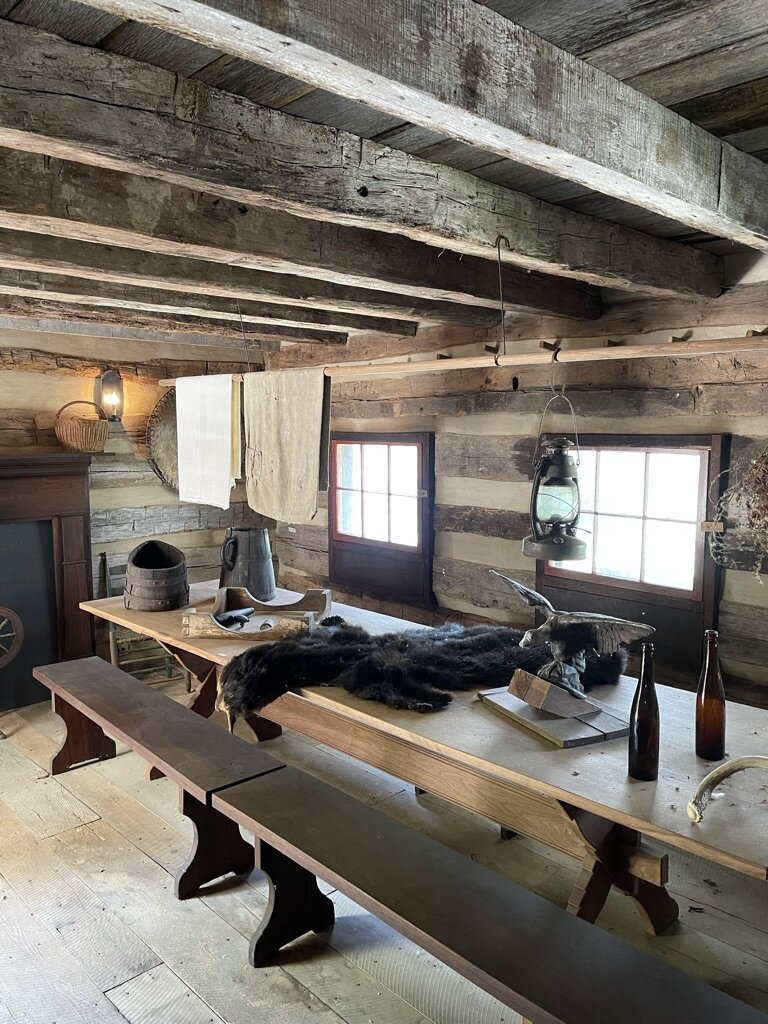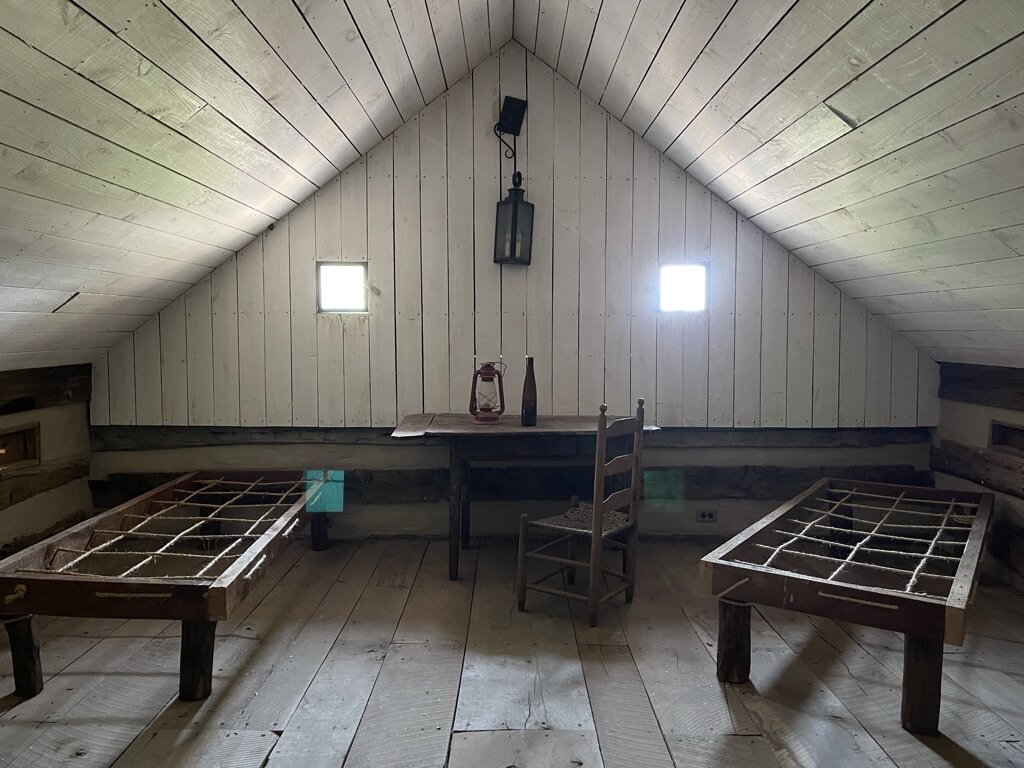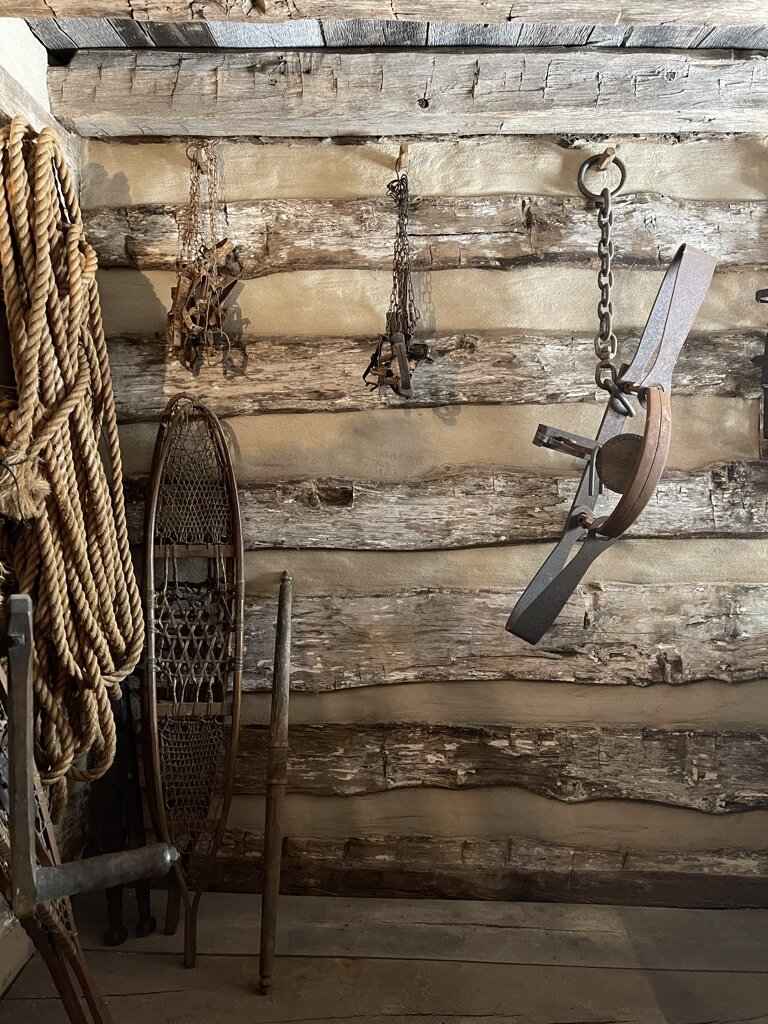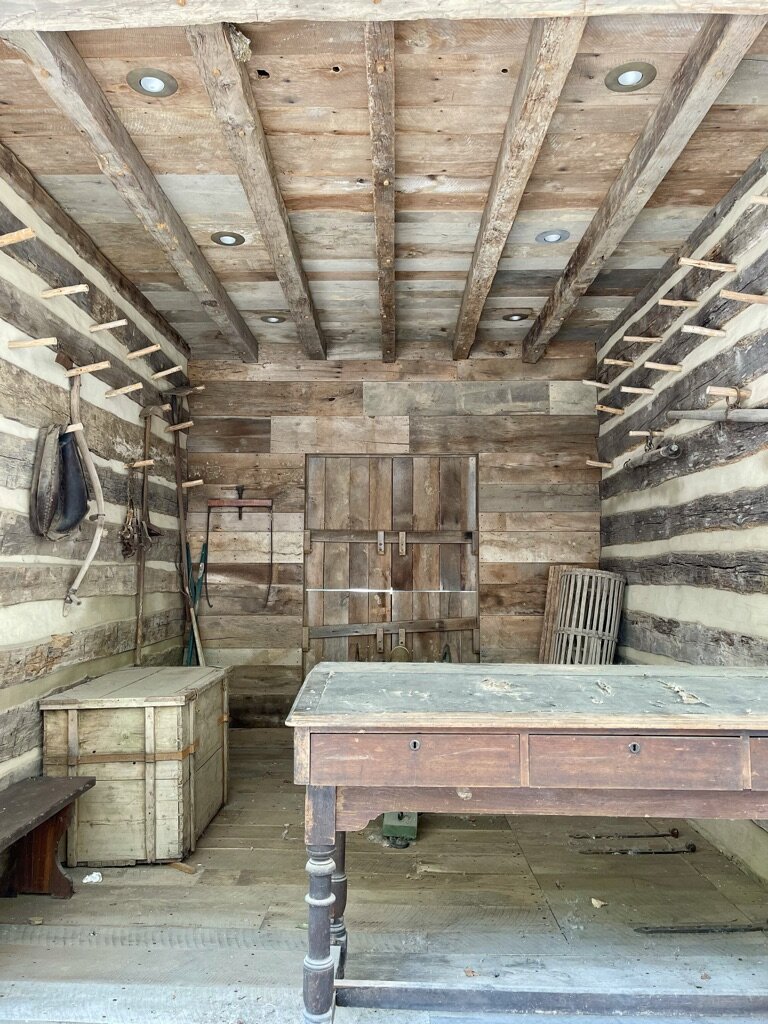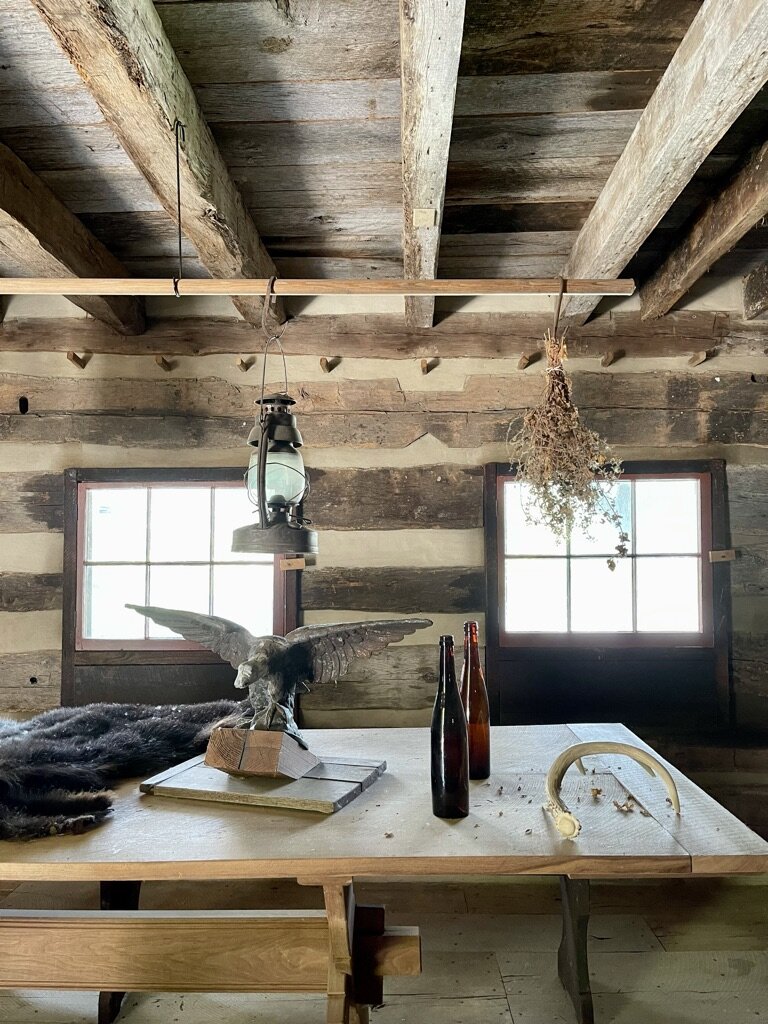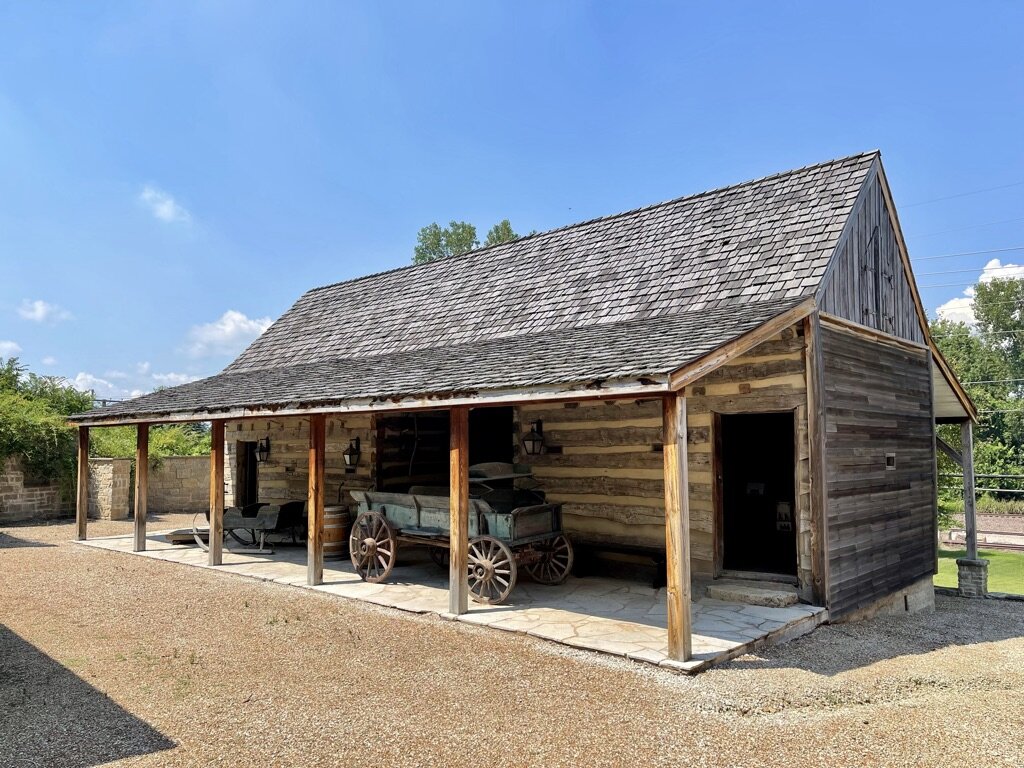
Trading Post
The building that we now call the Trading Post was originally built here by Francis Boeing, who intended it to be his home. Constructed between 1851 and 1853, the original house only occupied, and in fact still makes up, what is now the western half of the current building. That house was added onto at some point in its history, and during the renovation to its current state, the newer addition was torn down and replaced by an authentic 1790s log structure brought to the Farm from Wardsville, MO (now the eastern half of the Trading Post).
Before Hermann was Hermann, it had been settled by French. Here, we demonstrate the French presence in this region with an authentic 1790s structure. You will find items that would have commonly been traded amongst the land's inhabitants, who included Native Americans, French immigrants, old stock Americans, hunters/trappers, and explorers travelling west.
There is plenty of evidence in the archaeological record that Native tribes had been trading with Europeans before the French ever claimed this land, but the French trappers and traders invigorated trade between Indigenous people and themselves to a much greater extent. Along with a variety of uses for animal pelts, beaver hats were hugely popular in Europe during the 18th and 19th centuries, and the French traded European-made goods for beaver and other animal furs. Look around the room and see if you can name all the animals whose pelts hang here, a symbol of the richness and diversity of life that first drew these hunters and trappers to the Missouri River Valley.
Francis Boeing did not just live in this house, he used it for a period of time as the town post office, as he served as Hermann’s postmaster. Communication in the 19th century was far slower than we enjoy today– keeping in touch with someone meant taking the time to write out a thoughtful letter, take it to the post office, and then wait for the other person to receive it and do the same. Hermann was a town of immigrants, and whether someone was from Pennsylvania or Germany, communication with the loved ones they left behind would have been dependent upon the local post office. The job of a postmaster may seem mundane, but Boeing was in the business of keeping families, friends and loved ones connected across vast distances.

